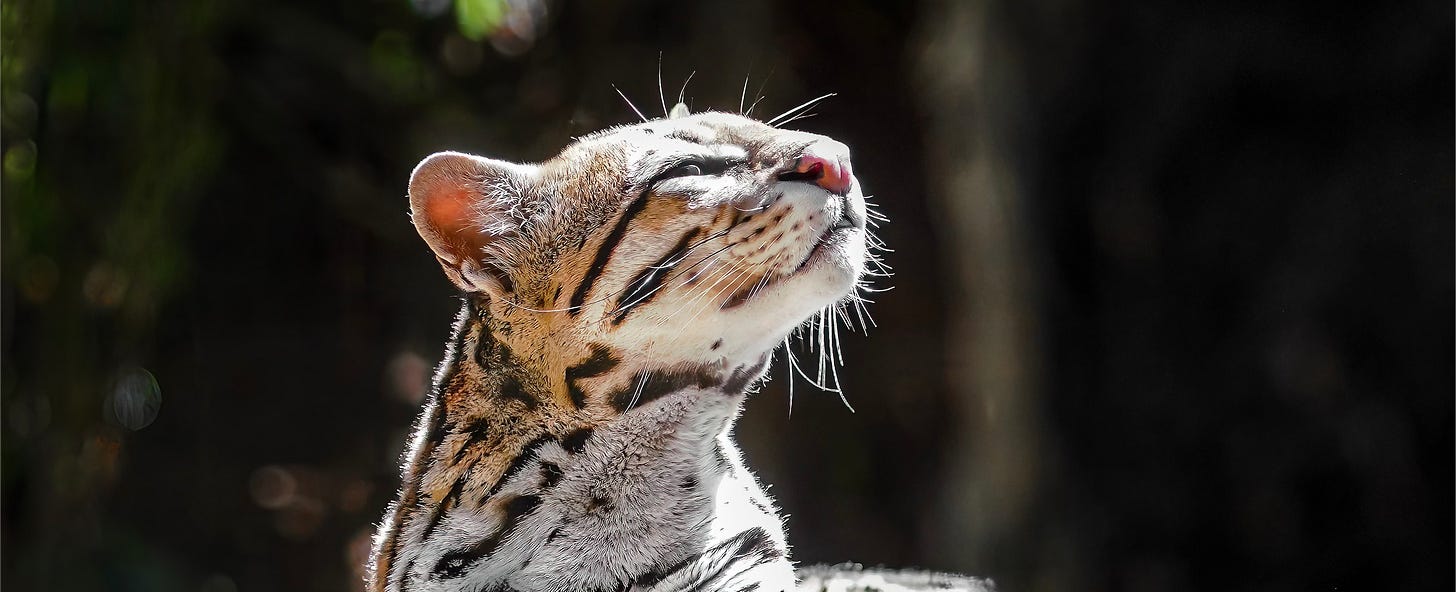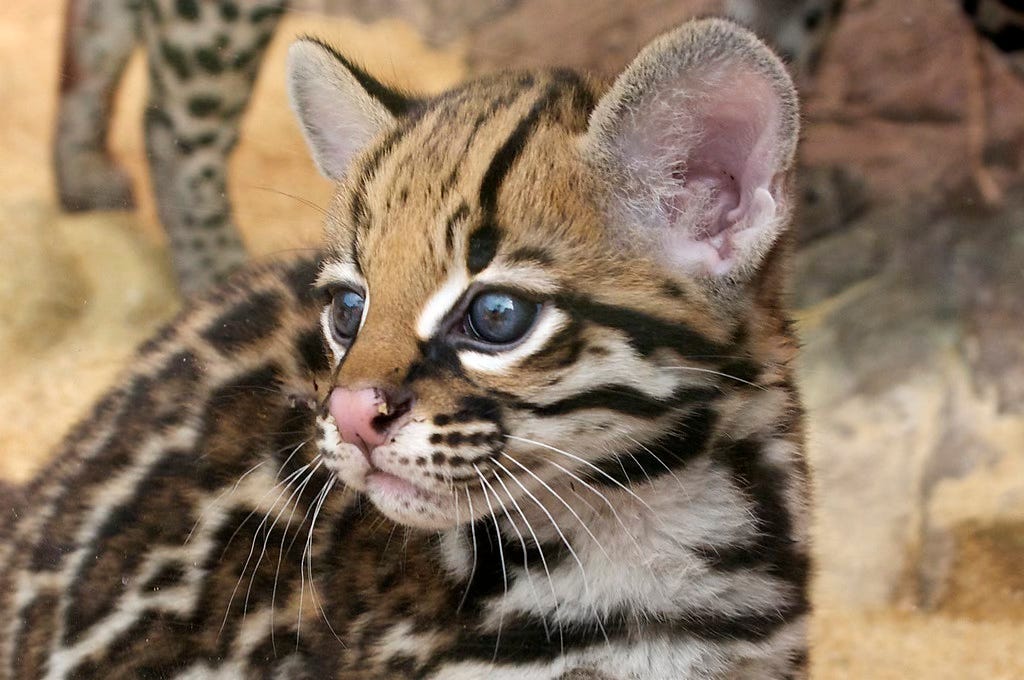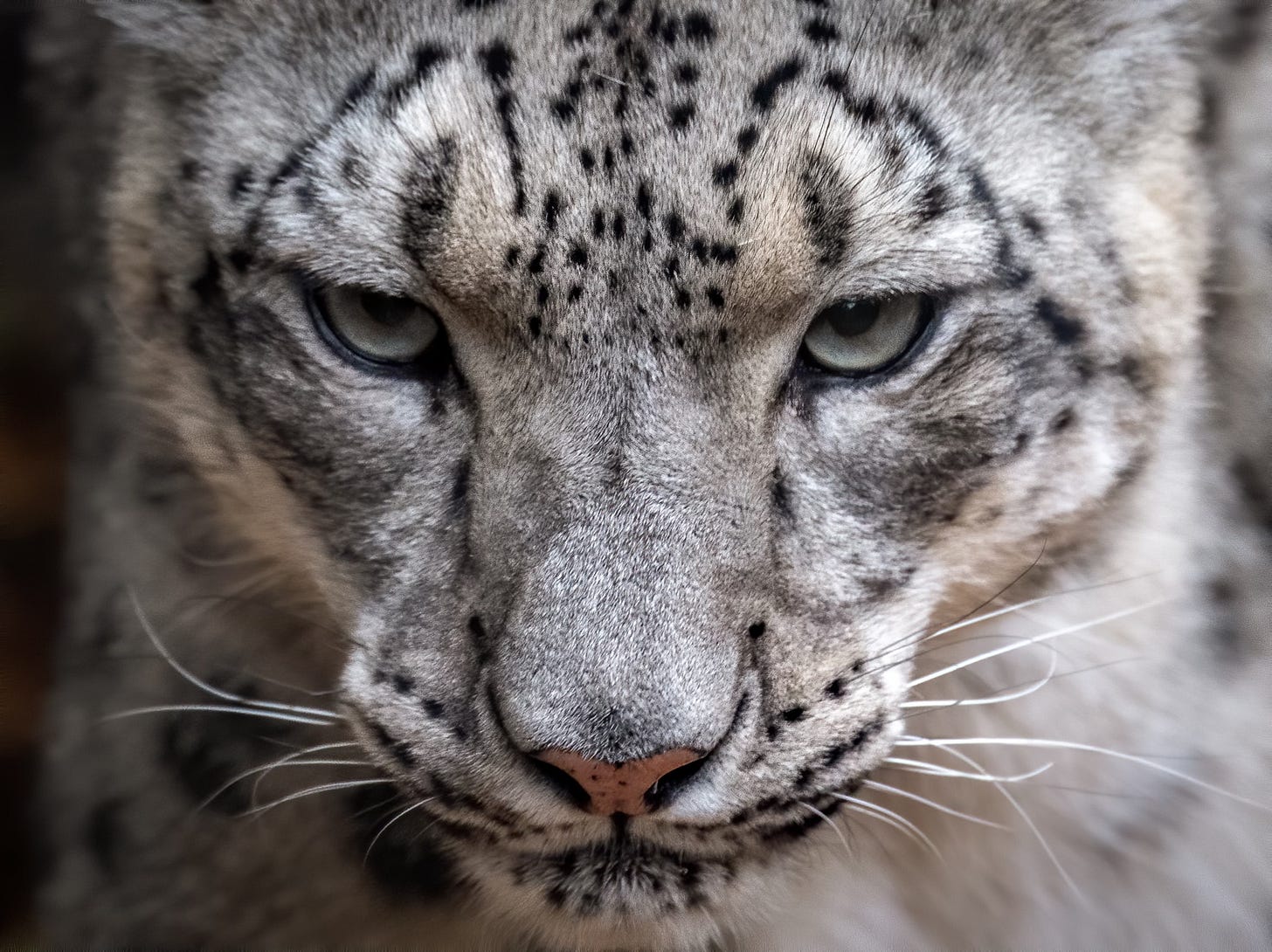Hope for America's most elegant hunter
And Nepal completes its first survey of snow leopards. It's a cat-heavy newsletter.
By Dan Fletcher
Here is today’s audio edition!
In the dense thornscrub of South Texas, one of America's most beautiful and endangered wild cats is making a quiet comeback. For the first time in decades, researchers have confirmed a record number of ocelots roaming in one of their last U.S. strongholds — offering a rare bright spot for a species that's clung to survival by its dappled claws.
These medium-sized cats with their unmistakable spotted coats once ranged across much of the southern United States, from Arizona to Arkansas and Louisiana. Today, fewer than 100 remain in the wild in the U.S., isolated in two small breeding populations in South Texas.
What makes the ocelot so special?
They're exceptional climbers and swimmers, with flexible ankle joints that can rotate their hind paws 180 degrees, allowing them to descend trees headfirst
Their large eyes provide exceptional night vision (six times better than human vision in darkness)
Despite being twice the size of house cats, they can make themselves nearly invisible in brush, thanks to their cryptic coat pattern
They're one of the few wild cats that can occasionally be heard making a distinctive "chuckle" vocalization during mating season
The recent uptick comes from camera trap studies at Laguna Atascosa National Wildlife Refuge, where researchers have now identified at least 22 individual ocelots – the highest count ever recorded there. Each cat is identified by its unique spot pattern, as distinctive as a human fingerprint.
"We know there have to be some more out there," Elizabeth Grunwald, a research associate with the Caesar Kleberg Wildlife Research Institute told Valley Central, noting that previous estimates hovered around 14-16 cats in the area.
While this news is encouraging, the total U.S. ocelot population is still believed to number fewer than 120 individuals, making every single cat crucial to their survival. (They’re more common south of the border, where their range extends down as far as Peru and Brazil.)
In the U.S., the story of the ocelot's decline is sadly familiar — they were heavily hunted for their spectacular fur coats until receiving federal protection in 1972. But habitat loss has been the most devastating blow, as the dense thornscrub they depend on was cleared for agriculture and development.
Today, these cats face another deadly threat: roads. About 40-45% of documented ocelot deaths come from vehicle collisions, a staggering mortality rate for a species already on the brink.
As Reuters recently reported, scientists are pursuing multiple conservation strategies, including fertility treatments to kickstart new generations of the endangered cats. Researchers from the East Foundation and Cincinnati Zoo have been attempting both artificial insemination and in vitro fertilization, though they've faced challenges with the cats' naturally slow reproduction rate and signs of inbreeding in the isolated population.
"An ocelot usually has one kitten. That's the normal litter size," Bill Swanson, Cincinnati Zoo's director of animal research, told Reuters. "And in the wild, the mother will raise that kitten for a full year until it's old enough to go out on its own. So ocelots are very slowly reproducing animals naturally."
Conservation efforts are focusing on two critical needs: reconnecting fragmented habitat and providing safe road crossings. The Texas Department of Transportation has installed wildlife underpasses on several roads around Laguna Atascosa, with the first confirmed ocelot using one in 2020. Meanwhile, the U.S. Fish and Wildlife Service, private ranchers, and conservation groups are restoring thornscrub vegetation to create corridors between isolated populations.

By the end of this year, a specialized Ocelot Conservation Facility will be completed in Kingsville, Texas, providing medical care, reproductive services, and a setting where young ocelots can learn hunting skills before potential release.
Beyond Texas, a small number of ocelots have been documented in Arizona, including a recent newcomer photographed in the Atascosa Highlands of Coronado National Forest in June 2024. The best-known Arizona ocelot, nicknamed "Lil' Jefe," has been a resident of the Huachuca Mountains for over a decade, captured on trail cameras more than 100 times, most recently in July 2023. Arizona Game and Fish has now confirmed seven different ocelots in the state since 2009, though there's no evidence of breeding north of the border in the Southwest, with these rare sightings likely representing individual males dispersing from Mexico.
For visitors to South Texas and southeastern Arizona, spotting one of these ghost-like predators remains a rare privilege – but thanks to dedicated conservation efforts, the chances are getting slightly better each year.
Quick Links! 🔗
There’s still a few hours left to vote to decide April’s FUZZ funds recipient. It’s down to a two
horsesheep and camel race, with the Wild Camel Protection Foundation clinging to a one-vote lead. Want to decide the outcome? Join as a paid subscriber today to cast your vote — 100% of your subscription goes to conservation causes now and every month into the future.
After decades of speculation and partial surveys, Nepal has announced its first consolidated count of snow leopards: 397 individuals roaming the country's rugged highlands. This represents nearly 10% of the world's population despite Nepal containing just 2% of suitable habitat. The study revealed that these elusive "ghost cats" prefer the western mountains, where rugged terrain and abundant blue sheep provide perfect hunting grounds. Most cats were found in and around the Annapurna region, a hotspot for both snow leopards and trekkers seeking Himalayan adventure.






Awww, they can rotate their hind paws 180 degrees! Their vocalizations are really a whole other genre of cat speak.